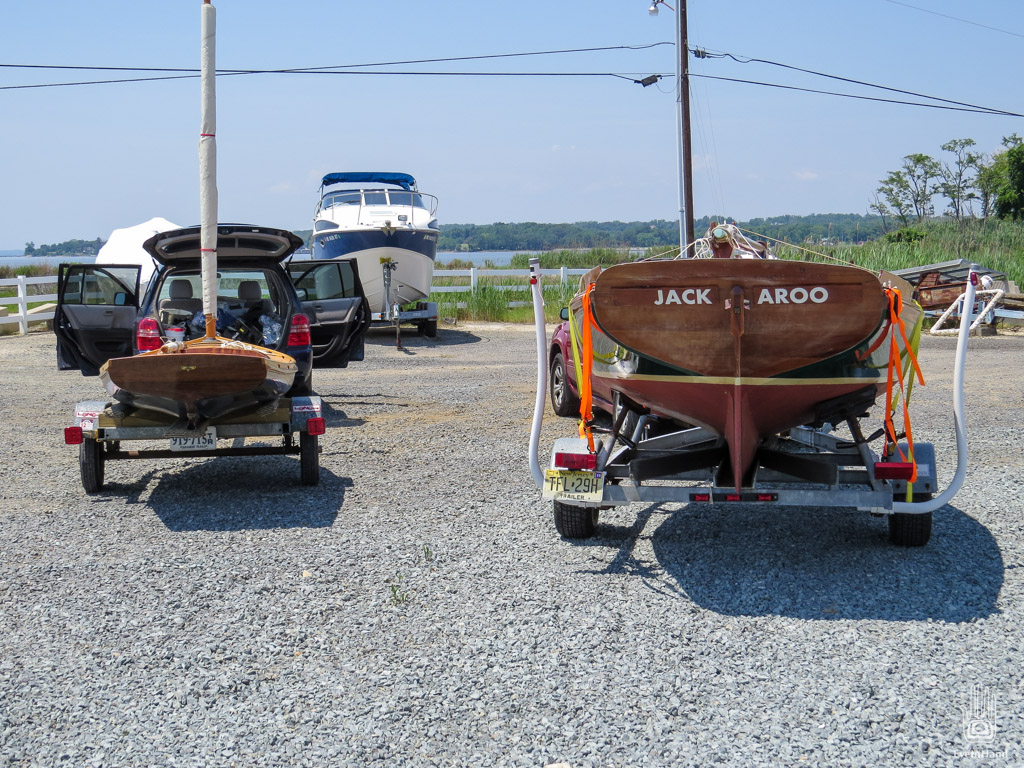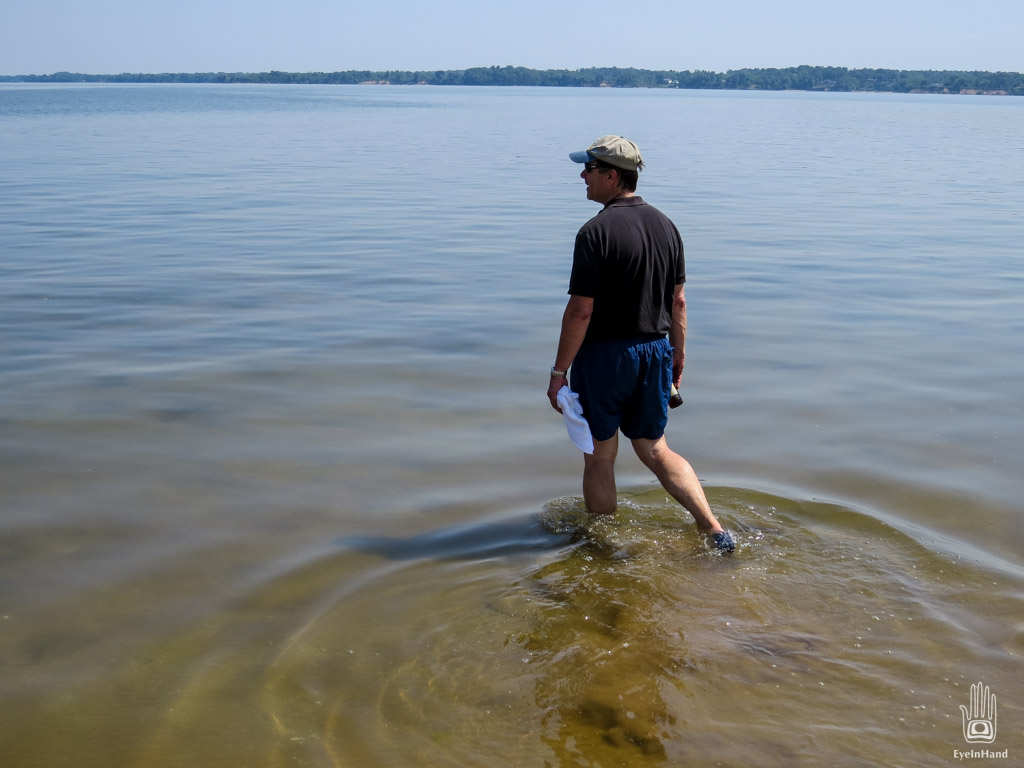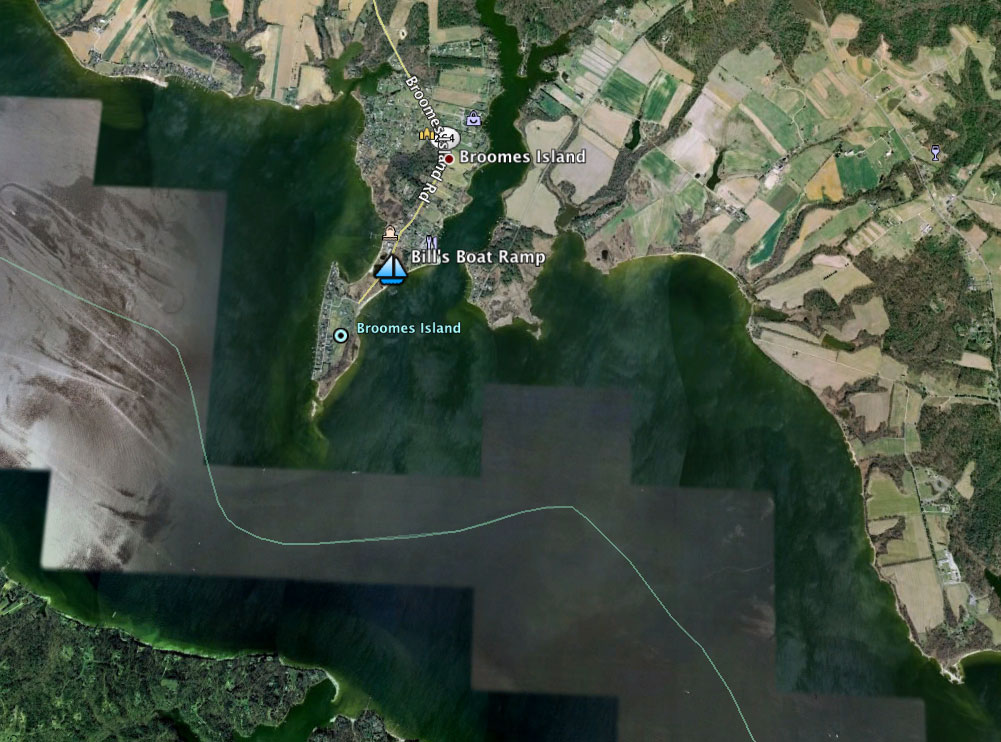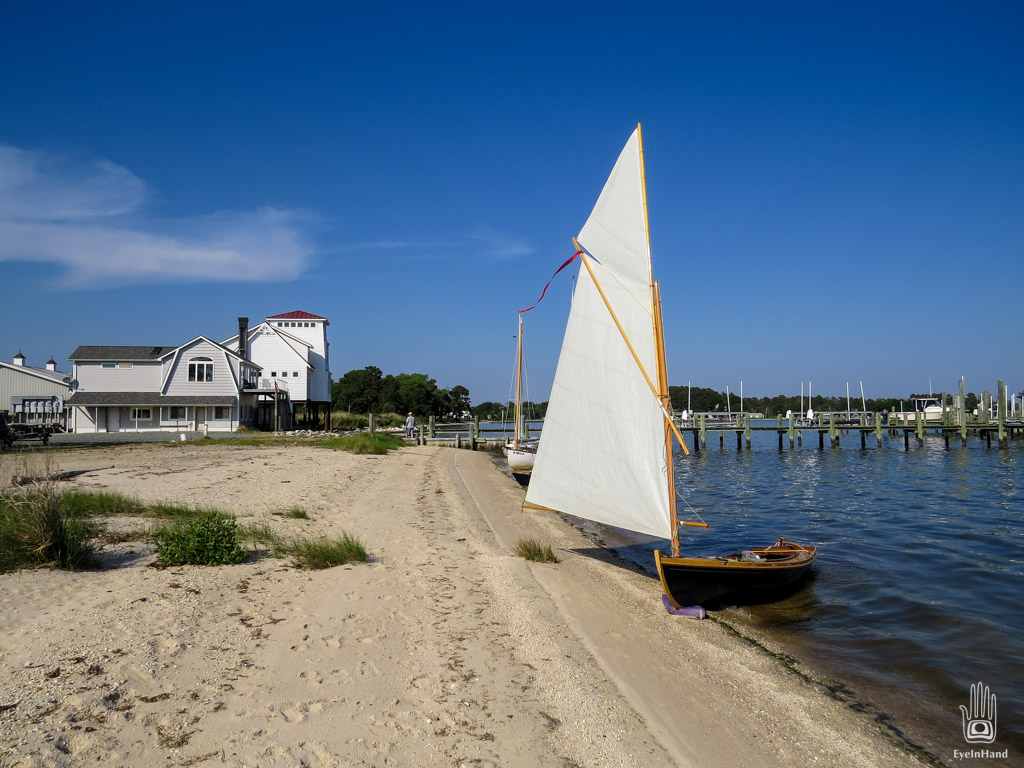Broomes Island from the water
Why the long previous explanation? Well, on Thursday, for the first half the group, the vacation started as soon as we passed through the bent and rusty gate at Broomes Island. It was pretty clear that no one was going to get ruffled about anything.
As it happens, the tide was out, leaving the ramp too shallow for the larger boats to float off. It was noon, the next high tide not until 5pm. Word came that Kevin Brennan had been delayed at home, was still in Baltimore. We told him not to hurry: It would be hours before we got on the water, and no matter. The weather was fine, the scenery beautiful, pretty boats, good company, barely any wind anyway. Vacation had already started for the rest of us.
And plenty of time for photos.
Broomes Island isn’t an island, and never has been, as far as I can tell. More a big, low sandbar sticking about a mile out into the Patuxent. It’s overgrown in low places with reeds and sedge, some big oak trees on the high ground. There are signs of former oyster shucking houses along the bounding creeks. Some nice homes, some docks.
About halfway down the peninsula, the neck narrows and the land flattens out to just a little above the tide line. A tidal marsh sidles up against the road here, with ducks and herons in the ditches among the rushes. Maybe this stretch of not quite dry ground, separating the far point from the mainland, is what appended “island” to the name. There’s a small workboat marina, Len’s, that looks to have been there a long time, on the edge of this marshy swale, then Bill’s place on the Bay side right in the middle.
It may have been a small boat yard or fishing camp, or maybe just a small marina. Closed many years, it seems. The new owners – a nice couple, friends of one of our group – were puttering about fixing the place up to reopen again, and let us use the ramp, leave our cars for the weekend. The’ve done a really nice job, too. We just had to keep the gate closed or random people would drive in, thinking they were ready for business. Nice for us, because it meant we had the place to ourselves.
Sand washed up to form a wide, pretty beach on the Bay side, but also shoaled the ramp. There was only a foot of water at the bottom, just enough to wet the axles on the trailers. One of our boats, the Haven, needs 18″ to float, and a foot more than that to launch. We’d have to wait closer to evening for the high tide for that one, but after talking and tinkering a while, those that could launch did.
Launching “Little T”
The little Melonseed slid in easily, as did the custom sailing canoe and an O’Day day sailer, a fast and capable production boat. Kevin MacDonald’s Marsh Cat, Little T, is built light, with a spartan interior absent any furniture and few fittings, so the four of us were able to slide that one off, too. Little T is the same boat that Kevin and Mike Wick sailed to the Dry Tortugas. Twice.
The other Marsh Cat, Obadiah, is built heavy, and Pete was in no rush. He was fine waiting for the tide and wading around the shallows. The third Marsh Cat, Doug Oeller’s Comfort, and Paul Skalka with a Handy Cat, would not arrive until Friday morning, conveniently timed for the next high tide.
 Depth perception. Melonseed on the left, Haven 12 1/2 on the right.
Depth perception. Melonseed on the left, Haven 12 1/2 on the right.
The challenge, we all knew, would be Mike Wick’s Haven 12 1/2.
Jackaroo is a beautiful boat. The Haven, like the Herreshoff predecessor, and now the Sommes Sound version, is the culmination of generations of sailboat design refinements that peaked at the turn of the century. You can see all that history in its lines. Clearly it comes from a time when sailing was both a high art form and a means of survival – not just recreation. The original Herreshoff was designed specifically for deep New England waters, where you could launch once in Spring and tie up to a mooring all season. In terms of design for performance and seaworthiness, no compromise was made to make them easy to launch and retrieve. The newer variations, like Mike’s, modify the fixed keel to a ballasted centerboard for shallower waters and easier launching; but they still sail like deep water boats, solid and stable even in rough conditions, and still need more water than our shoal draft marsh boats.
Mike, the new owner, found the boat in poor repair, though not too far gone. Neglected after the original owner passed, it sat with fresh water in the bilge long enough to soften some ribs and keel logs. Mike spent a year getting it ready for sail, and still has a few small things left to attend to, as we discovered later.
The wind stayed calm into late afternoon, but was expected to build steadily over the next several days. That meant tonight and early tomorrow would be the only time I could use the tops’l on the Melonseed. Both Stuart Hopkins and I made some adjustments after last season, and I hadn’t tried them yet. Seemed to rig up nicely, though.
While waiting for the tide, and for Kevin B. and his Navigator to arrive, I shoved off to ghost around a bit, just to pass the time on a beautiful afternoon, and to see if I’d forgotten anything before we were all underway.
Beautiful. Sky, clouds, sun, in what my grandfather’s watermen buddies called a “Slick Ca’m” when the water is glassy.
Passed cicadas buzzing irritably on the surface. We would see rafts of them floating by all weekend, falling from the trees after the big mating frenzy, many still going at it in unison along the shores, making a real racket. And, oddly enough, a box turtle. He seemed to be swimming contentedly, bobbing along buoyed by his shell like a guy sitting on an inner tube drinking a beer. He just kind of looked up at me and said, “Hey buddy, nice boat.” Should have snapped a photo of him, because the guys just raised an eyebrow when I told it later.
Some video of ghosting on the Patuxent:



























